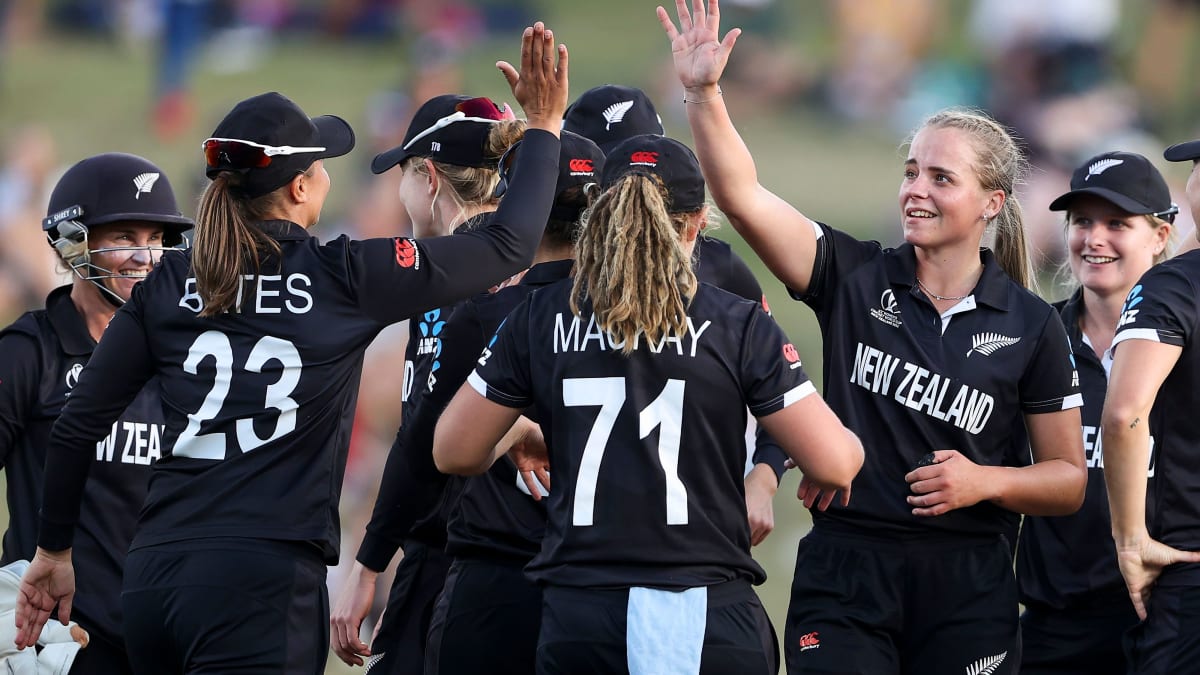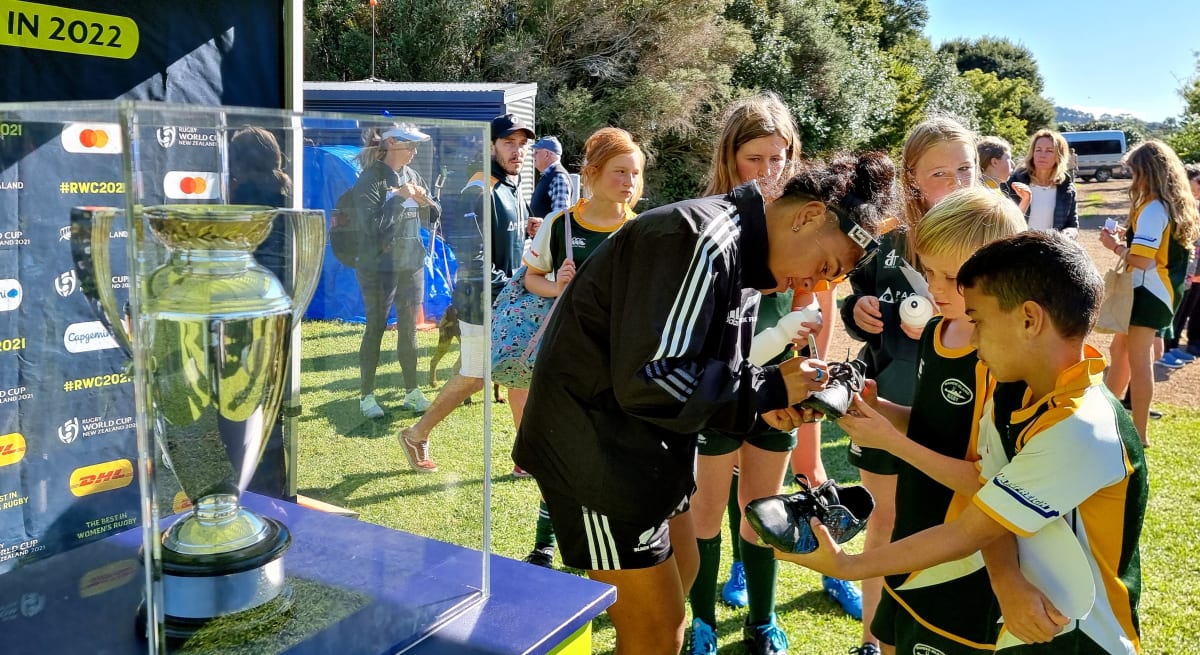
A surge in women's sport in NZ media, but a fall in female bylines, highlight the latest Sport NZ study - which also shows where LockerRoom leads the pack.
Women’s sport is finally getting a foothold in New Zealand media, with an increase in news coverage to 21 percent in the past year - a leap that puts the country well out in front of the rest of the world.
The latest figures in an on-going study, released by Sport New Zealand today, show a significant increase in coverage since the last report on sports news reporting in 2020.
And even back then, when women’s sport coverage sat at 15 percent (a four percent increase on 2011’s dire statistic), New Zealand was considered ‘world leaders’ in the gender balance of sports reporting.
Sure, the Tokyo Olympic and Paralympic Games – where our female athletes once again stood out - inflated the numbers in the middle of 2021. But if the Games coverage was removed from the study, the percentage of women’s sport in media coverage last year would still be 19 percent.
Globally, women’s sports coverage averages just 4 percent, as revealed in a 2018 UNESCO report. A more recent study found women's sports coverage in the United States was just over 5 percent - showing no growth in three decades.
LockerRoom’s commitment to raising the profile of women in sport in New Zealand is also recognised in the latest study – highlighting the difference in themes and issues we cover and the in-depth stories we produce.
When the study looked at how LockerRoom portrayed women in sport, the themes that set us apart included athletes’ life balance and personal lives, sponsorship and investment, and advocacy for women’s sport.
But here’s where the New Zealand media is lagging:
- Newsrooms throughout the country continue to be heavily male dominated. Women in sports news reporting is still seriously under-represented, with the number of female bylines dropping in 2021.
- And while the three top codes in New Zealand sports coverage – rugby, cricket and football – hog 60 percent of the limelight, just 11 percent of that coverage is devoted to the women’s game.
The three women’s World Cups in those sports being held here this year and next, are expected to boost those numbers. But the trick then is to hold that elevated interest.

The Sport NZ-Isentia study is part of the Government’s women and girls in sport and active recreation strategy in 2018. It’s based on human analysis of around a third of all sports news coverage in New Zealand, and looked at 46 sports covered online, in print, on radio and TV.
Leading the study for Sport NZ, Phil Clark sees the 6 percentage point growth in coverage as “extremely positive”.
“Across the media, there’s a more concerted effort to improve the coverage of women’s sport. They’re trying new things,” he says.
“Sports are working harder. There are changes in the events that are being delivered – more teams in female leagues, like the Phoenix Women; double headers with men’s games in cricket.
“You’ve got growth in gender balance across the board - in the three biggest sports, across all media companies and all media segments. So wherever you look, it’s much better than it was last year.”
Clark maintains collating the research is only half of the study.
“The other half is about the conversations that stem from the research, with the media and with sports. If you can’t measure it, you can’t change it.”
And those conversations seem to be leading to some positive change.
The World Cup effect
Women in Sport Aotearoa CEO Rachel Froggatt calls the progress for women’s media coverage “outstanding” – but says there’s still plenty of work to do.
“It shows what happens when there is a dedicated commitment to covering women’s sport,” she says.
The Big Four events in New Zealand in 2022 and ‘23 – three women’s World Cups and the world’s largest conference on gender equality in sport – will see surges in female sports coverage.
“But the challenge now is to maintain and increase that momentum. If you take your eye off the ball, it will slip backwards,” Froggatt says.
A case study of this year’s Cricket World Cup, played here, showed women’s sports coverage more than doubled – to 33 percent during the month-long tournament. But it still made up less than half of all cricket coverage (that month also included the Black Caps series against the Netherlands and the death of Australian legend of the game, Shane Warne).
“It was really great to see all the coverage, but it was still strongly weighted towards the home team, and very little coverage of the overseas teams,” Froggatt says. “That wouldn’t happen at a men’s tournament.”

Clark optimistically believes the three World Cups – the cricket event earlier this year, rugby in October and football next July – will grow and hold the audience.
“Mega-events provide a short-term boost in coverage of women’s sport that actually shifts the dial for overall gender balance,” he says. “But having teams in regular leagues in cricket, football, rugby and basketball will give week-in, week-out coverage that will also boost the numbers over time.”
The biggest spikes in women’s stories last year were around the Tokyo Games – up to 42 percent during the Olympics and 29 percent for the Paralympics.
“What we’re seeing in this study is the beginnings of sustainable growth. While there were spikes, even the lower months are higher than they were the previous year,” Clark says.
Netball still dominates with 20 percent of all women’s coverage, but other sports are closing in - cricket is now up to 16 percent.
For the first time, the study looked at the top 10 teams garnering attention in New Zealand media. Predictably, the All Blacks and Black Caps dominate, with only two women’s teams appearing on the list – the Silver Ferns at No.6 and the White Ferns at No.9.
Women on the front-line
More women’s voices are being heard in news stories. For years, there’s been justified criticism that male coaches, administrators and even partners have spoken for female athletes.
Six out of 10 sources commenting on female athletes were the athletes themselves - the Tokyo Games playing a major role in that jump (up from four out of 10).
And the proportion of females quoted in stories has grown – albeit slowly – from 14 percent to 17 percent.
But the women reporting on those stories isn’t rising. Female bylines made up only 10 percent in our media in 2021 – and that’s dropped one percent, too.
"LockerRoom continues to tell stories that no one else is telling" - Philip Clark, Sport NZ.
The number of female presenters on radio and TV, though, has increased – from 35 percent in 2020 to 43 percent last year. (The study didn’t include Sky and SparkSport, which have high percentages of women presenters and commentators).
“There’s certainly a lot of room for improvement in attracting females to become sports journalists and creating better visibility of those who are there,” Clark says.
Froggatt believes newsrooms should think about not only increasing the number of women in their sports departments, but also giving female reporters more opportunities.
“The best stories are still going to male reporters, and their bylines are still out front. They could consider a policy around the best sports stories being split more evenly,” she says.
How we portray women in sport
Since Newsroom.co.nz began LockerRoom just over four years ago, dedicated solely to women in sport, the all media coverage nationwide has risen around 10 percentage points.
“LockerRoom came along at just the right time, with a really powerful statement of how important it is to profile women’s sport,” Clark says.
“And LockerRoom continues to tell stories that no one else is telling. In the past year, it has led the way covering stories on women’s health and wellbeing, which we’re now seeing become more common across sports media.”

The study shows LockerRoom stories are more than twice as long as the online average for women’s stories (2000 words compared with 885), and the ‘portrayal markers’ in our content showed more varied discussion of athletes outside results and preparation.
“The thing we see with LockerRoom, which was not unexpected, is that the themes and topics coming through in the coverage are far more broad-ranging than they are for women’s sport generally,” Clark says.
“LockerRoom is touching on issues that other media may not be covering, because the coverage isn’t focused on match reports, its more well-rounded.”
Other independent news organisations making noticeable inroads in covering women in sport are Waatea News (40 percent of their stories involve female sport), The Spinoff (34 percent) and Māori TV (33 percent).
* You can read the full report into Sports Media and Gender here.







